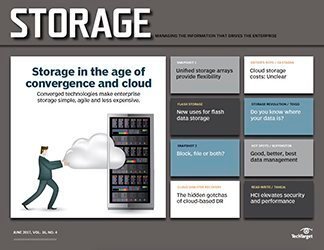PRO+ Premium Content/Storage
Access your Pro+ Content below.
New use cases for flash data storage benefit enterprises

This article is part of the Storage issue of June 2017, Vol. 16, No. 4
High-performance storage systems have been with us for a while. In the 1990s, these systems were DRAM-based and primarily used to accelerate transaction-oriented databases. The expense of these systems made them hard to justify and limited their use to applications where massive performance acceleration would make the organization more money. Times have changed. High-performance flash data storage systems have become easier to justify as costs have come down, moving them into the enterprise and expanding their adoption. Today, flash is breaking new thresholds in price per gigabyte and, as a result, use cases are changing once again. Flash is the workhorse You used to only deploy flash data storage systems, like their dynamic RAM (DRAM) brethren, for applications that could take advantage of their performance. But flash is now the go-to media for primary data storage. Any application or data set that can justify the use of primary storage can also justify the use of flash. The next step in flash adoption will drive the technology...
Features in this issue
-
Multiprotocol unified storage systems poised for growth
With support for block, file or both types of data on the same device, unified storage architecture is a flexible storage option for the modern data center.
-
New use cases for flash data storage benefit enterprises
Adoption of protocols such as NVMe and memory bus-based flash DIMMs helps flash storage devices keep pace with the most demanding use cases.
Columns in this issue
-
Price of cloud storage may be fuzzy
Cloud storage services offer convenience and can cut IT spending, but not in every case. Make sure to do the math before you commit to putting your critical data in the cloud.
-
Three approaches to strategic data management: Good, better and best
It's time organizations take a more mature and sophisticated approach to data management techniques and make the most of the data they generate and consume.
